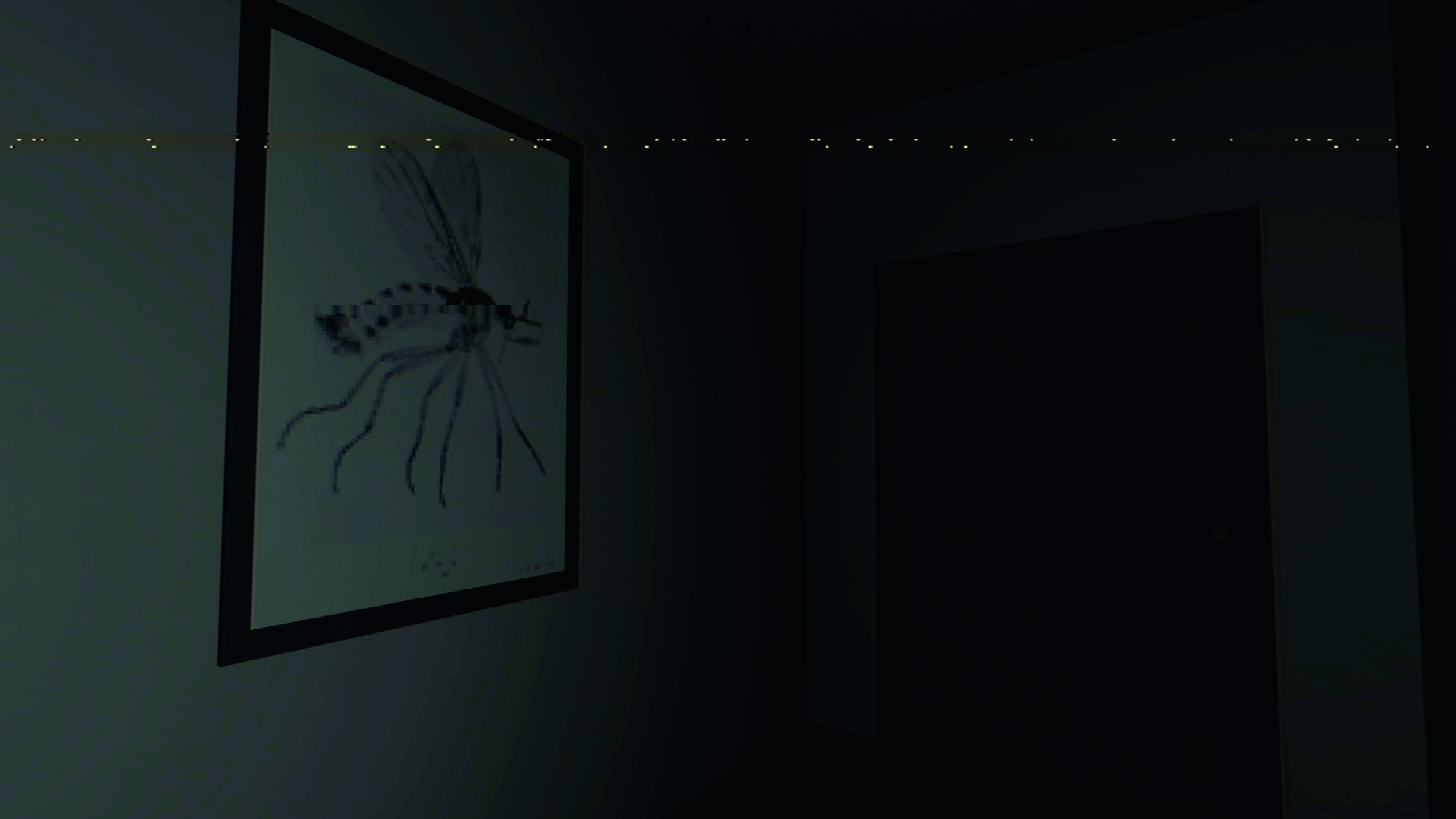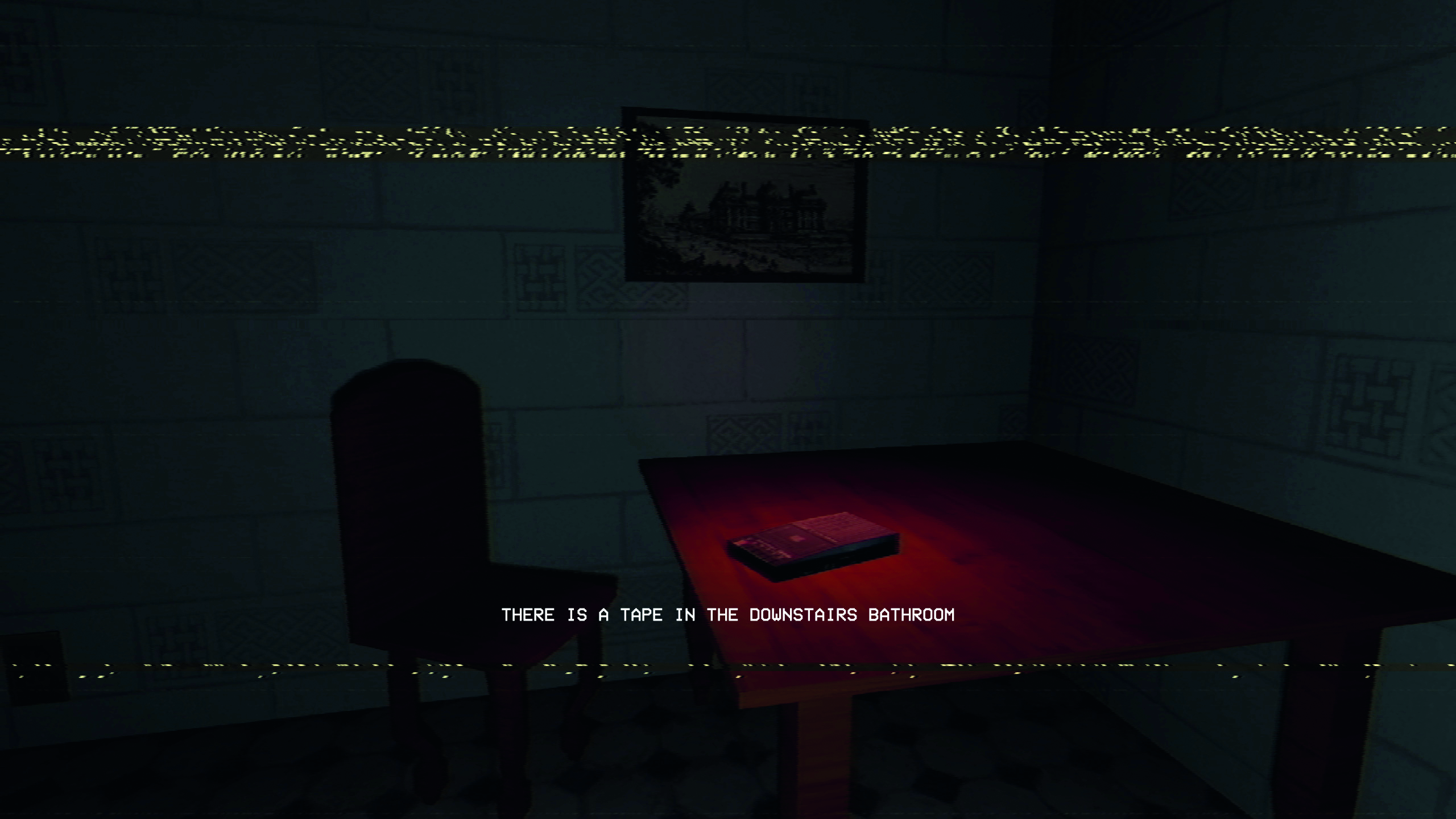Why I love the subtle domestic dread of Anatomy
This article originally appeared in issue 350 of our glossy magazine. You can get it delivered right to your door by grabbing a subscription, which will also net you special subscriber-only covers.
When I was a kid there was nothing more terrifying than a dark basement. I vividly remember the dread I'd feel having to go down into the darkness to fetch something, those awful steps between the edge of the upstairs light and the basement light switch that loomed just in the darkness.
Each time I'd head upstairs, I'd hit that switch and scramble for the steps—scared that whatever might be lurking in the darkness would grab me if I were too slow. That was all a funny memory to me as an adult, but then, a few years ago, I played Anatomy by indie game developer Kitty Horrorshow. All those fears came flooding back, and it took me weeks before I felt comfortable being alone in my own basement.

Just like the basement in my childhood home, though, Anatomy shouldn't be a game that scares me as much as it does. The idea is simple: you explore a dark, empty suburban house collecting cassette tapes that you play on a recorder found in the kitchen. The whole thing is presented through the lo-fi noise of a VHS tape, giving the oppressively dark hallways and mundane furniture of the home a hair-raising sense of movement as they jitter and distort ever so slightly.
It's creepy, but it's not exactly the stuff that makes 30-year-old me scared. But that's the genius of Anatomy: it slowly worms its way under your skin, scratching away at your sense of safety until dining tables, windows, and beds all begin to look a lot more sinister.
As you find new cassettes and play them back, you listen to the garbled recording of what could be a professor spelling out a thesis on the role houses have played in human history. Things quickly get unsettling though, as the narrator segues into a detailed comparison of the house and the human body: the windows are its eyes, the hallways its arteries, the dark basement our roiling, murky subconscious. And as the comparison continues, the house you explore begins to change. It's subtle at first, but by the time I reached the true ending this empty, normal house had become something much worse.
Close to home
The first time I finished Anatomy years ago I couldn't be alone in my basement for days. Suddenly every shady corner felt menacing, every piece of furniture sinister. I was six years old again, turning off the lights and hurrying upstairs, never lingering. I even had trouble sleeping because one of Anatomy's cassettes cruelly observes how odd it is that we spend countless hours asleep in our beds every night trusting that our house will keep us safe. But can we trust our house? Can we really be sure that during those long, dark hours, something doesn't enter our room and watch us?
When I revisited Anatomy again this year, however, I found it to be even more disturbing. Like a lot of people, I spent weeks and months effectively trapped inside my own house because of local quarantines due to the COVID-19 pandemic. There's no way that Kitty Horrorshow could have anticipated how terrifyingly relevant its little indie game would become four years after its initial release. Today, Anatomy is scarier than ever.

Locked inside with nowhere else to go, I could better understand my own house through the upsetting lens of Anatomy's narrator. One night I woke up to go to the bathroom and saw my wife's elliptical exercise machine silhouetted in the dark, its handlebars twisted upwards like horns. It scared me so badly I couldn't sleep after.
But this is exactly why I love Anatomy so much. While there's no shortage of excellent horror games, the genre still largely relies on grotesque monsters and violence. Those threats are often horrifying, but their otherworldliness means that as soon as I step away from the game the spooky illusion they create begins to quickly fade. But Anatomy is a rare game that twists everyday objects into new and unsettling shapes. It takes the simple pleasures of a life spent indoors and forces you to see it as something to fear. Your house is meant to be the safest place you can be, and Anatomy brilliantly perverts and poisons that expectation.
from PCGamer latest https://ift.tt/2X8SiHM
This article originally appeared in issue 350 of our glossy magazine. You can get it delivered right to your door by grabbing a subscription, which will also net you special subscriber-only covers.
When I was a kid there was nothing more terrifying than a dark basement. I vividly remember the dread I'd feel having to go down into the darkness to fetch something, those awful steps between the edge of the upstairs light and the basement light switch that loomed just in the darkness.
Each time I'd head upstairs, I'd hit that switch and scramble for the steps—scared that whatever might be lurking in the darkness would grab me if I were too slow. That was all a funny memory to me as an adult, but then, a few years ago, I played Anatomy by indie game developer Kitty Horrorshow. All those fears came flooding back, and it took me weeks before I felt comfortable being alone in my own basement.

Just like the basement in my childhood home, though, Anatomy shouldn't be a game that scares me as much as it does. The idea is simple: you explore a dark, empty suburban house collecting cassette tapes that you play on a recorder found in the kitchen. The whole thing is presented through the lo-fi noise of a VHS tape, giving the oppressively dark hallways and mundane furniture of the home a hair-raising sense of movement as they jitter and distort ever so slightly.
It's creepy, but it's not exactly the stuff that makes 30-year-old me scared. But that's the genius of Anatomy: it slowly worms its way under your skin, scratching away at your sense of safety until dining tables, windows, and beds all begin to look a lot more sinister.
As you find new cassettes and play them back, you listen to the garbled recording of what could be a professor spelling out a thesis on the role houses have played in human history. Things quickly get unsettling though, as the narrator segues into a detailed comparison of the house and the human body: the windows are its eyes, the hallways its arteries, the dark basement our roiling, murky subconscious. And as the comparison continues, the house you explore begins to change. It's subtle at first, but by the time I reached the true ending this empty, normal house had become something much worse.
Close to home
The first time I finished Anatomy years ago I couldn't be alone in my basement for days. Suddenly every shady corner felt menacing, every piece of furniture sinister. I was six years old again, turning off the lights and hurrying upstairs, never lingering. I even had trouble sleeping because one of Anatomy's cassettes cruelly observes how odd it is that we spend countless hours asleep in our beds every night trusting that our house will keep us safe. But can we trust our house? Can we really be sure that during those long, dark hours, something doesn't enter our room and watch us?
When I revisited Anatomy again this year, however, I found it to be even more disturbing. Like a lot of people, I spent weeks and months effectively trapped inside my own house because of local quarantines due to the COVID-19 pandemic. There's no way that Kitty Horrorshow could have anticipated how terrifyingly relevant its little indie game would become four years after its initial release. Today, Anatomy is scarier than ever.

Locked inside with nowhere else to go, I could better understand my own house through the upsetting lens of Anatomy's narrator. One night I woke up to go to the bathroom and saw my wife's elliptical exercise machine silhouetted in the dark, its handlebars twisted upwards like horns. It scared me so badly I couldn't sleep after.
But this is exactly why I love Anatomy so much. While there's no shortage of excellent horror games, the genre still largely relies on grotesque monsters and violence. Those threats are often horrifying, but their otherworldliness means that as soon as I step away from the game the spooky illusion they create begins to quickly fade. But Anatomy is a rare game that twists everyday objects into new and unsettling shapes. It takes the simple pleasures of a life spent indoors and forces you to see it as something to fear. Your house is meant to be the safest place you can be, and Anatomy brilliantly perverts and poisons that expectation.
via IFTTT

Post a Comment